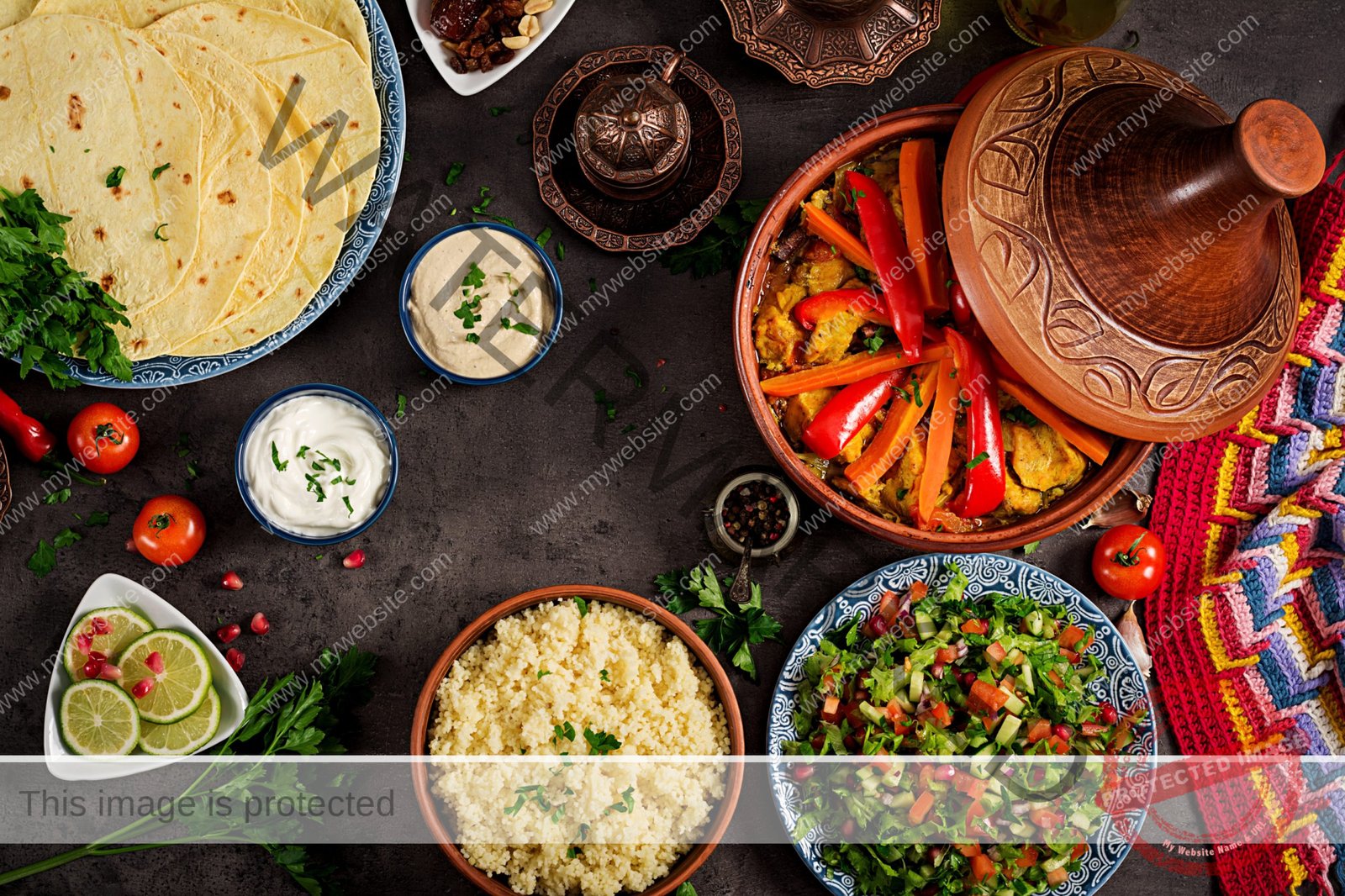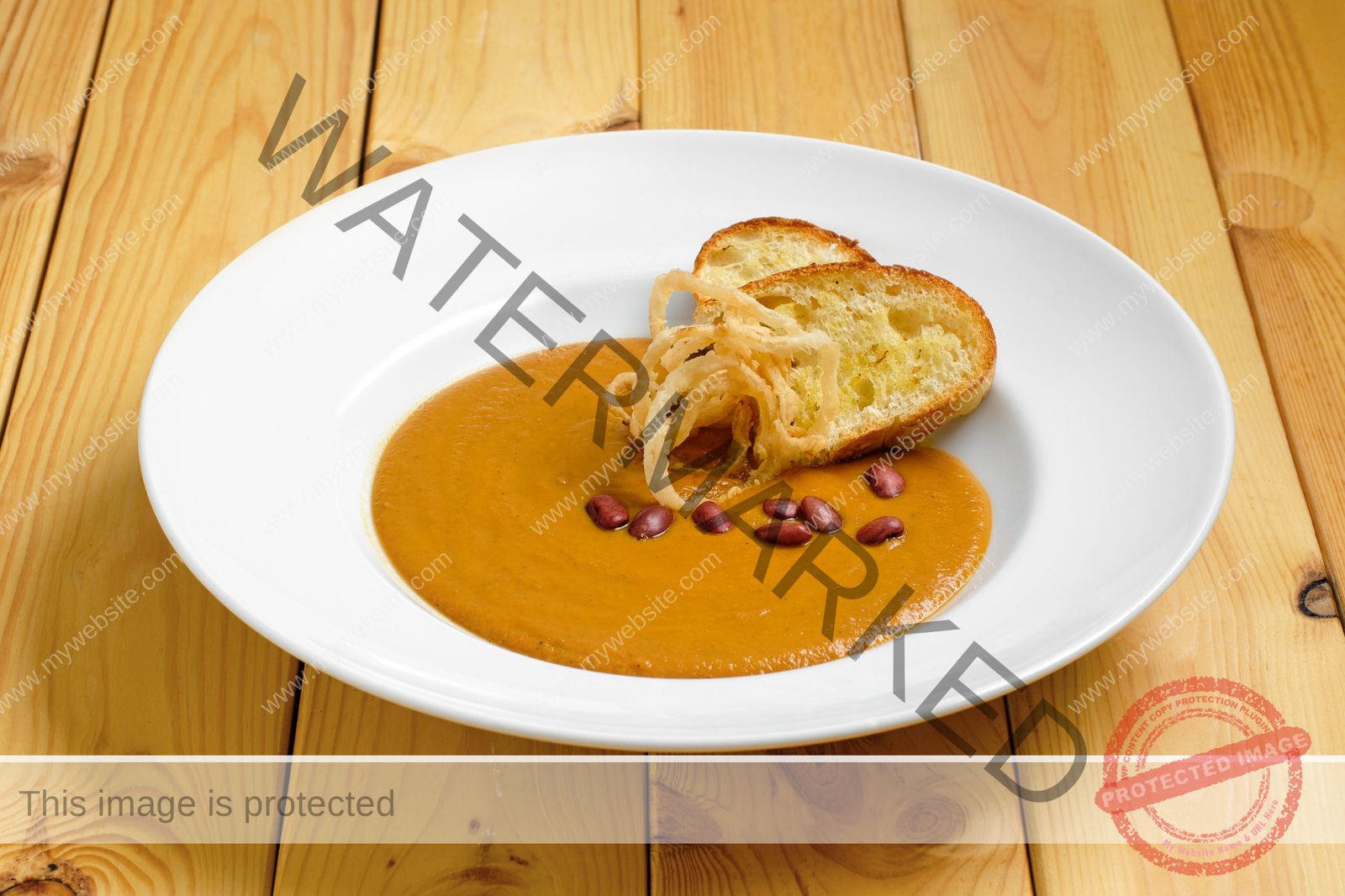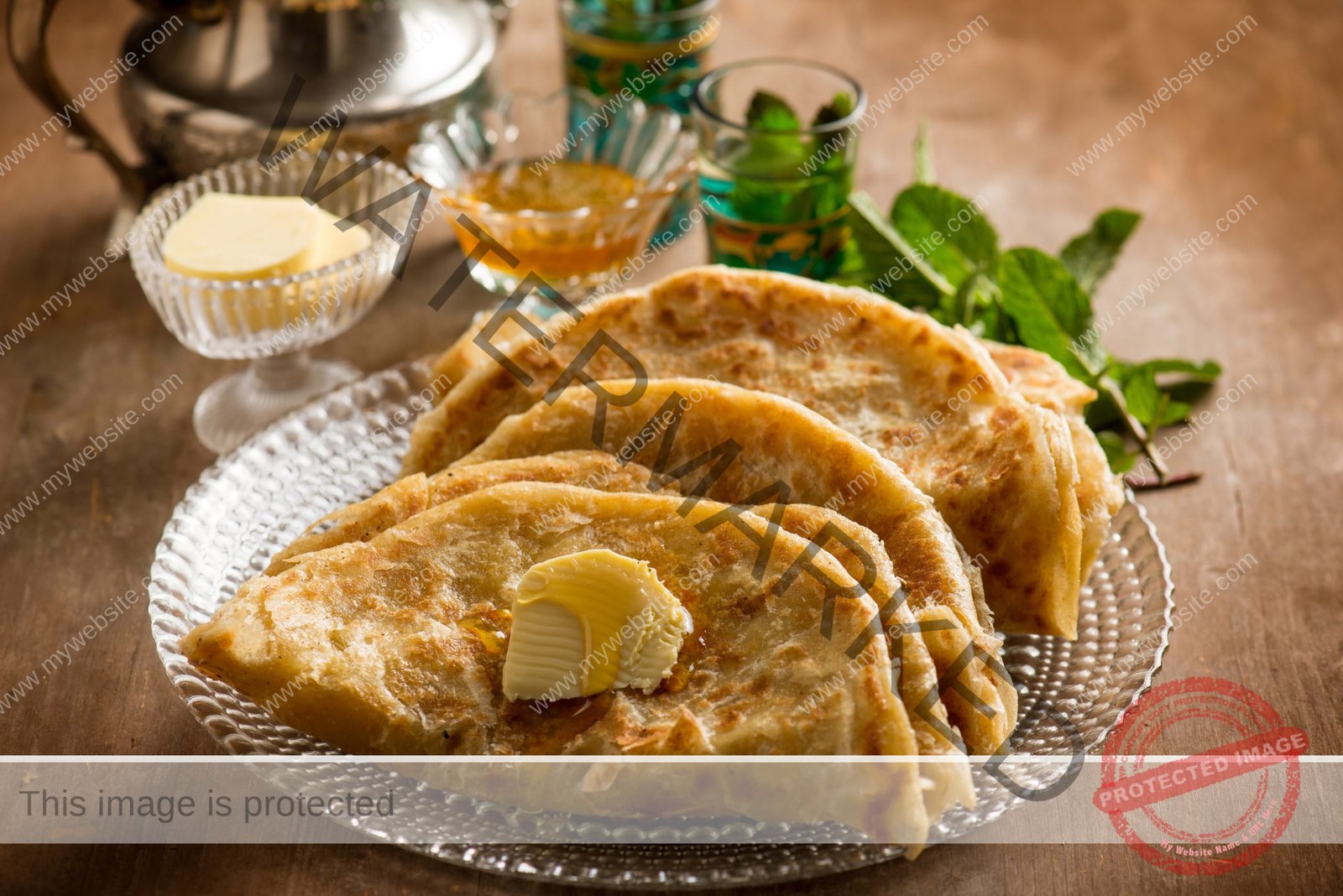Top 10 Moroccan Street foods
You should know that Moroccan Street Foods are slightly different from one region to another: Each region in Morocco has its own way of cooking and preparing food. Yet, they are all authentic.
These are the top 10 Moroccan Street foods that you need to be aware of and should try:
- Khobz/ Moroccan Bread
- Bessara Soup
- Steamed Sheep Head
- Sardines
- Brochettes
- Snails and Snail Soup
- Harira
- Msamen
- Merguez
- Chicken and Beef Shawarma
The video below talks about some Moroccan street foods:
1. Khobz/ Moroccan Bread
Using communal wood-fired ovens, Moroccans bake a very mouthwatering crusty bread. It is called khobz.In the local market “souks,” many vendors sell and serve all kinds of bread:
- Batbout.
- Krashel.
- Mahrash.
- Sardines
- Medfouna
- Khobz d’smida.
- Pan-fried loaves
- Waistline-busting loaves.
Some of the other types of bread are:
- Baghrir: It is a spongy bread with a delicate texture that feels light and soft. It is often called a “thousand holes pancake” (Moroccan type).
- Rghaif: It is a flaky, layered flatbread similar to Msamen.
- Harsha: It is buttery bread made of fine semolina and milk. It looks like an English muffin and has a cornbread-type texture and taste. It is appetizing, mainly when served hot right from the grill. Harcha is principally eaten at breakfast time, with tea or coffee.
They are mouthwatering when served:
- Syrup.
- Hot/warm with cheese.
- Jam or Moroccan honey.
2. Bessara Soup
Bessara soup is a tasty dried fava bean dip or dried split peas. This humble and delicious soup is famous in Morocco and among the top 10 Moroccan street foods. Thus, it is a street type of food and a homemade comfort type of food. It is believed that Bessara preserves body temperature, especially during wintertime. Yet, some Moroccans drink all year long as it is part of the culture.
Bessara soup is served while warm from a heated communal dish. It is served in individual bowls or deep plates. Moroccans mostly use crusty bread, “Khobz” for dunking or scooping the soup, or use spoons. Thus, it would be best to try this incredible dish as it is one of the most mouthwatering Moroccan street foods.
Here is how Bessara is made:
- They simmer the dried split peas and fava beans in water.
- They soak them all day or overnight for easy cook.
- They cook it for 1 hour and 20 minutes to be ready for serving.
- They seasoned it with olive oil, garlic, lemon juice, and salt.
- They served it pureed with cumin, paprika, and olive oil.
- They are served with harissa on the side as flavorings or cayenne pepper. This is if you like it to be spicy before being served.
3. Steamed Sheep Head
Steamed Sheep Head is not surprising to be among the top Moroccan street foods. Steamed Sheep Head is mainly served on the day of the Islamic Feast of the Sacrifice called “Eid al-Adha.” Sidenote: During Eid, some people eat the head for breakfast after a home slaughter on Eid’s days, while others eat the following day.
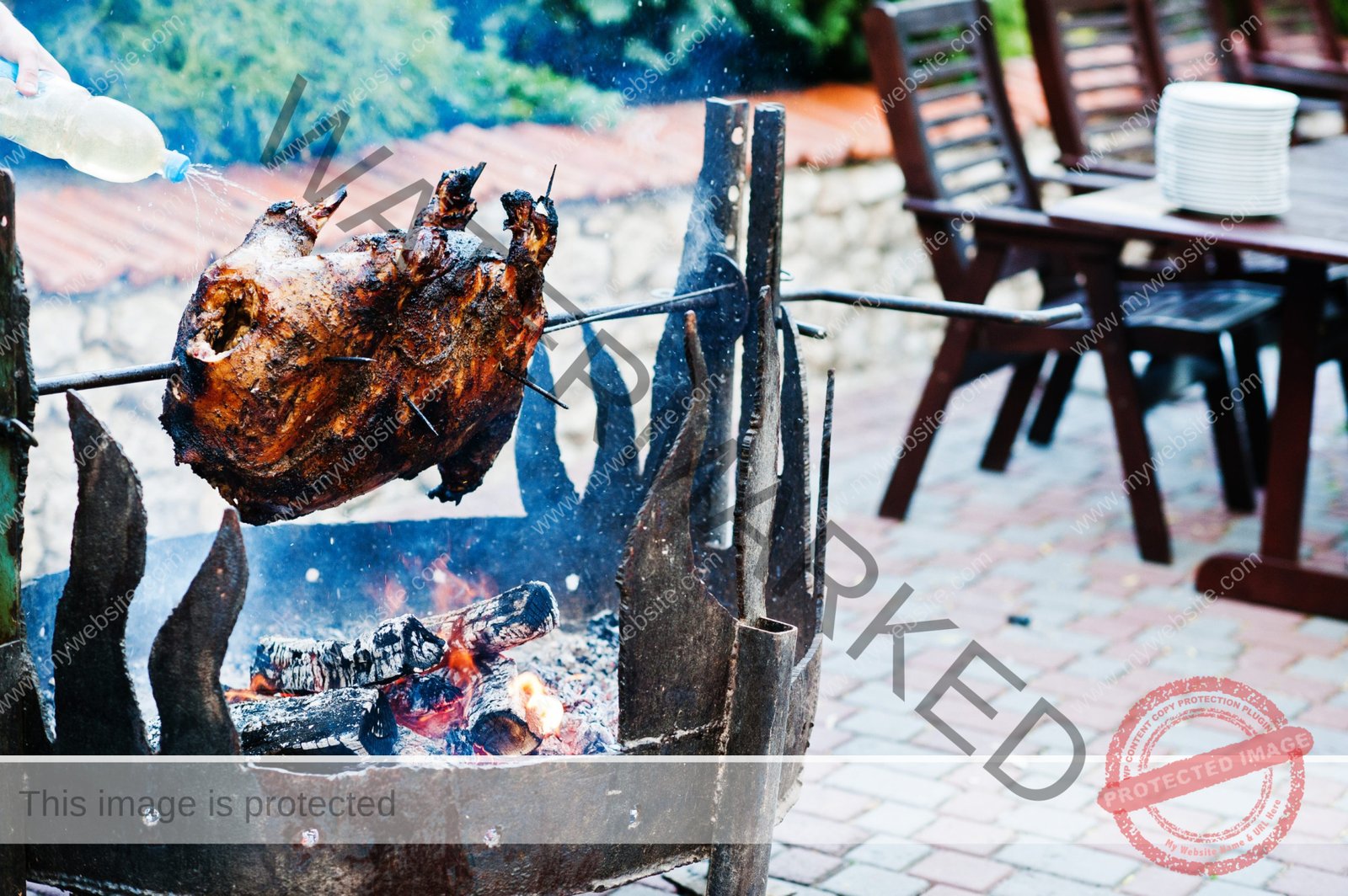 If you want steamed sheep head, it is also widely served in local markets yearly. It is served for lunch and supper.
If you want steamed sheep head, it is also widely served in local markets yearly. It is served for lunch and supper.
Here is how it is prepared:
- The head is charred over coals to make sure it is completely blackened.
- They scrape off the burnt fur and skin.
- The head is cut into smaller pieces for easy cook. The brain is removed in the process.
- The head is steamed for about three hours to ensure it is well-cooked to be served.
- They use spices, primarily salt and cumin on the side, for a mouthwatering flavor.
4. Sardines
Morocco is well known for being the world’s largest exporter of sardines. They are the most classic example of Moroccan street foods. Thus, it is one of the main meals and an essential component of the Moroccan diet. They are served as a starter, alongside a cooked main dish, or on the go.
 Fried sardine dishes and grilled sardine sandwiches are crucial to Moroccan street foods. They are so tasty and irresistible because of their mouthwatering flavors. Sardines that are primarily served in local markets are stuffed with:
Fried sardine dishes and grilled sardine sandwiches are crucial to Moroccan street foods. They are so tasty and irresistible because of their mouthwatering flavors. Sardines that are primarily served in local markets are stuffed with:
- Olive oil.
- Garlic, paprika.
- Cumin, coriander.
- Lemon juice, chili.
5. Brochettes
You could call Brochettes Queens or the kings of barbecue in Morocco. They are made in many easy, quick, and delicious recipes. Preparing brochettes is well known for producing a cloudy area of smoke, which you will experience when you go to local markets. In regional markets, you could order either spicy or non-spicy brochettes.
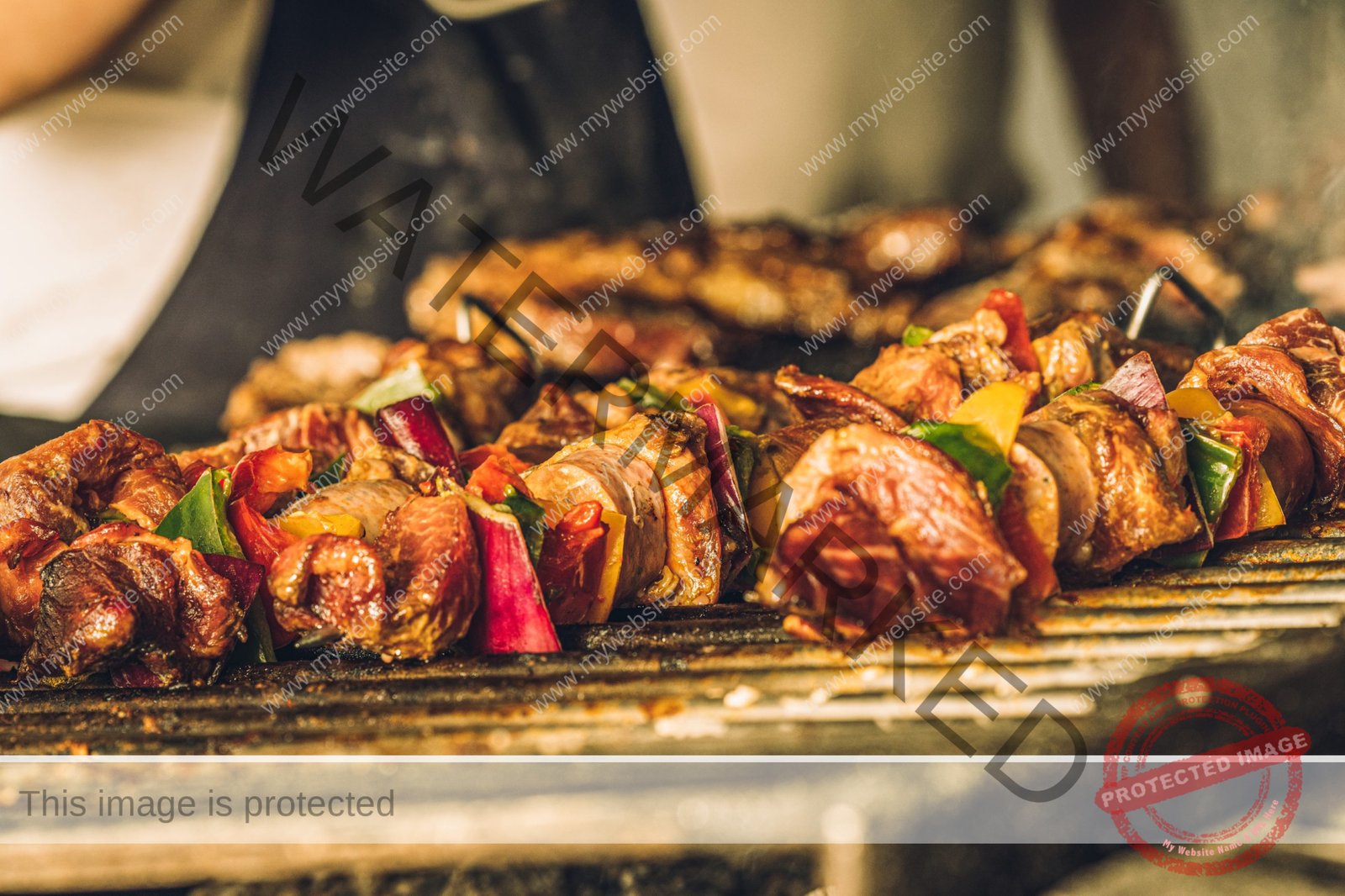 Brochettes are mostly made from chicken kebabs or ground meat, cooked over charcoal on skewers. After they are grilled, they are rubbed with some of the most flavorful spices. These include:
Brochettes are mostly made from chicken kebabs or ground meat, cooked over charcoal on skewers. After they are grilled, they are rubbed with some of the most flavorful spices. These include:
- Cayenne pepper.
- Salt, Paprika, and Cumin.
- Harissa is a Moroccan red pepper sauce.
6. Snails and Snail Soup
Snail soup is a well-known soup in local markets and is widespread nationwide. When you visit local markets, you will see stalls selling steaming bowls of snail soup. These soups have an earthy flavor or shitake mushroom flavor.
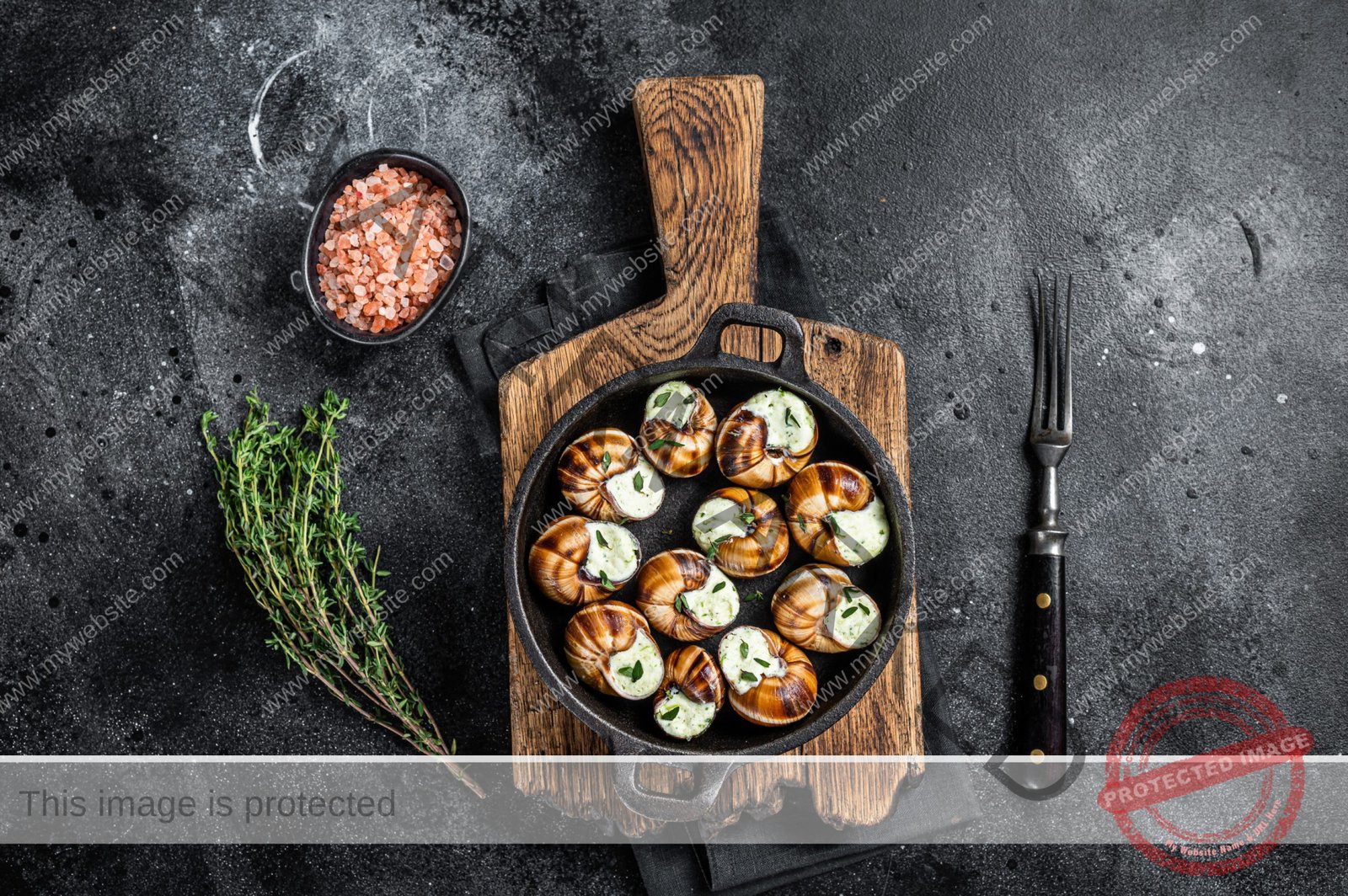 Moroccans believe that Snail soup has so many health benefits:
Moroccans believe that Snail soup has so many health benefits:
- It helps with liver diseases.
- It boosts the immune system.
- It helps with digestive system problems.
- Snails are a low-calorie source of protein. They are full of valuable vitamins and essential minerals.
This is because a snail contains:
- Vitamins A, E, K, and B12.
- 80% water, 15% protein, and 2.4% fat.
- Antioxidants and anti-inflammatory properties.
- Calcium, fatty acids, iron, magnesium, and selenium.
How it is made:
The snails are simmered in a broth containing many natural and valuable ingredients. These include aniseed, Arabic gum, thyme, mint, caraway, and licorice.
The flavored Snail soup is mixed with up to 15 different spices. The snails are eaten out of the bowl with a toothpick.
7. Harira
Moroccans drink Harira frequently throughout the year, which is highly consumed in the winter. This is because it can be considered a complete meal with decadent ingredients. However, it is trendy during the month of Ramadan. Thus, it is served to break the fast after sunset during the holy month of Ramadan. Harira is one of the most healthy Moroccan street foods.
 Harira is made in many different ways and with many other spices. The soup’s process depends on the region where it is produced in Morocco. Harira is part of the Moroccan Legacy. Many Harira recipes are passed down from generation to generation. Yet, you can also make it how you like it.
Harira is made in many different ways and with many other spices. The soup’s process depends on the region where it is produced in Morocco. Harira is part of the Moroccan Legacy. Many Harira recipes are passed down from generation to generation. Yet, you can also make it how you like it.
- Celery, leaf parsley.
- Olive oil, grated onion.
- Rice, chunks of lamb ginger.
- Tomatoes past, uncooked rice.
- Flour, lentils, chickpeas, cilantro.
- Black pepper, cinnamon, turmeric.
Harira is served in restaurants, hotels, and streetside carts. It is called a crowd-pleaser soup when served at local markets” souks.” This is because it is made, nutrient-rich, and affordable.
Slurping your way through a bowl of Harira is not something that you will be struggling with. The soup is so tasty, and one bowl may not be enough. It is mainly served with:
- Dates, boiled eggs.
- Sweet pastries such as appetizing “Chebakia.”
- It can be served as a filling lunch, light supper, or side dish.
8. Msamen
It is not by surprise that Msamen is among the top Moroccan street foods. Msamen is Moroccan specialty flaky pancakes. It is a crêpe with a soft flatbread in a flattened square-shaped or round shape. Msamen can be served in many ways.
It is stuffed with fillings for lunch or supper, including ground meat “kefta.”, spicy herbs, Onions, and Vegetables.
It is topped with butter, honey, or even cheese with a cup of tea or coffee for breakfast. It is a favored early morning meal for breakfast.
Some people make homemade syrup with Msamen, a real treat for the taste buds. They melt butter and honey in a pan together until hot. They then use the mix with Msamen while it is a worm to give it the desired flavor.
9. Merguez
Merguez is a thin, long, spicy mutton or beef-based fresh Moroccan sausage pack. Merguez is grilled ground lamb, beef, or a mixture. They are made using beef mince, lamb mince, or both. The minced meat is mixed with spices such as harissa (a spiced chili paste) and paprika. It is prevalent across the country. Therefore, Merguez is one of the fantastic Moroccan street foods that you should give a try, and you will not be disappointed,
When served, Merguez sausage goes perfectly with a dipping sauce. This sauce is made in the mouthwatering spicy tomato salsa style.
10 Chicken and Beef Shawarma
Moroccan shawarma is a street food; it can be either beef or chicken. They are separately and slowly cooked on a rotisserie after being seasoned. Then, they are shaved off in thin slices into pita bread. They are served on a plate, in a sandwich, or a wrap. Moroccans make shawarma distinctively so you can choose sides and toppings with the shawarma. These side choices may include tahini, hummus, Pickled vegetables, salad, or anything else the vendors offer.
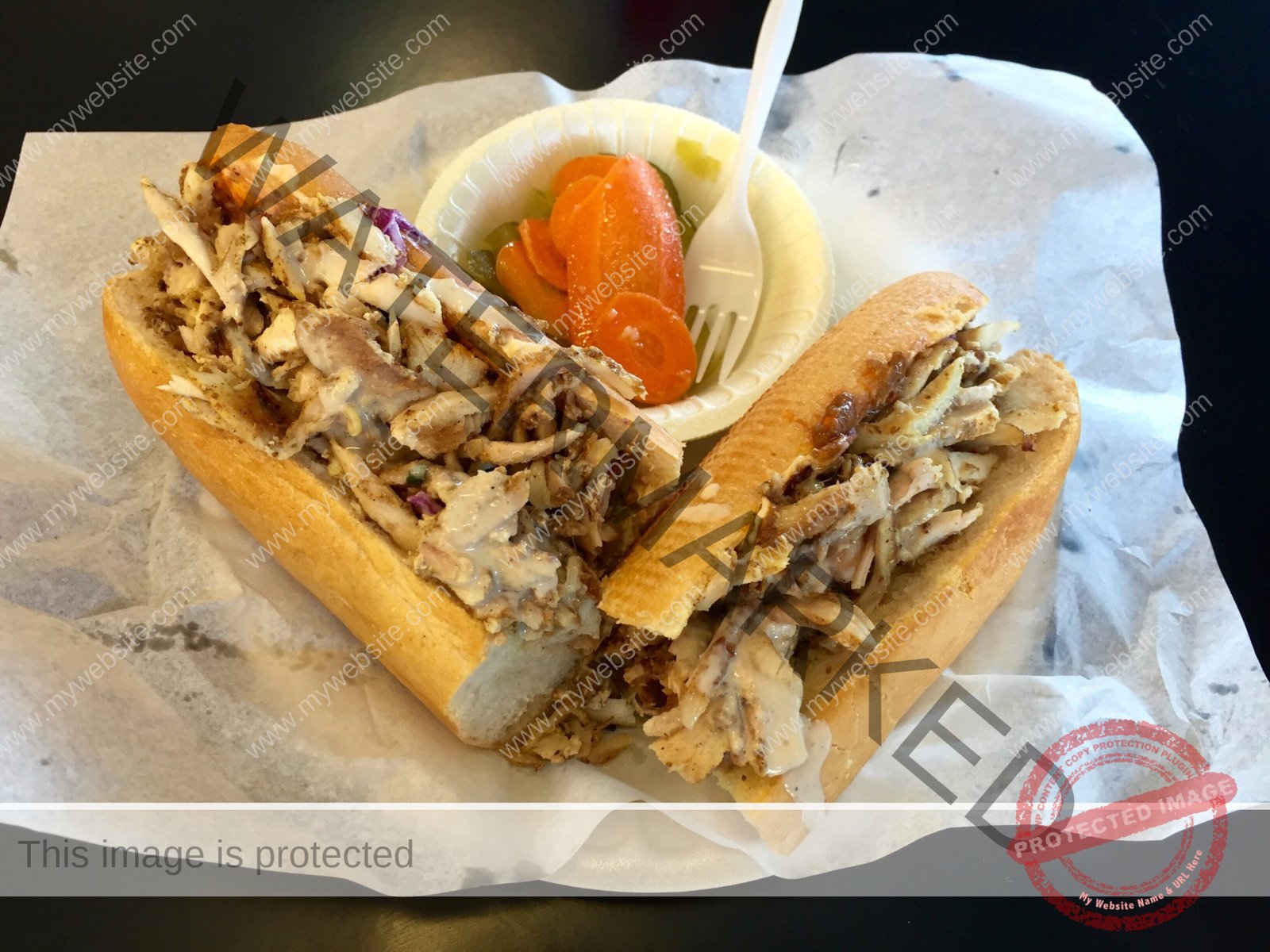 They are well-marinated with nicely balanced seasoning. These include:
They are well-marinated with nicely balanced seasoning. These include:
- Ginger, Oregano.
- Turmeric, Lemon juice.
- Cumin, Cinnamon, paprika.
Many other Moroccan street foods are not listed above. You will surely be amazed by so many other mouthwatering Moroccan street foods when you have a chance to visit Morocco, and you will see and experience all kinds of food that will be unforgettable to you.
One thing that you should know is that you can learn how to make some Moroccan street foods. As you understand, nowadays, there are so many resources that you can use to teach yourself how.
Moroccan street foods are always priced reasonably, so everybody in Morocco, including tourists, has them frequently.
Moroccan cuisine is known for its delicious and diverse street foods that are popular among locals and attract many tourists. Contrary to the name, these street foods are not limited to casual snacking and can be served on special occasions and at big ceremonies. Many of these street foods have a rich cultural significance and are integral to Moroccan culinary traditions. Additionally, the preparation and ingredients of these street foods may vary according to the region and location in Morocco, adding to the diversity and uniqueness of the cuisine.


